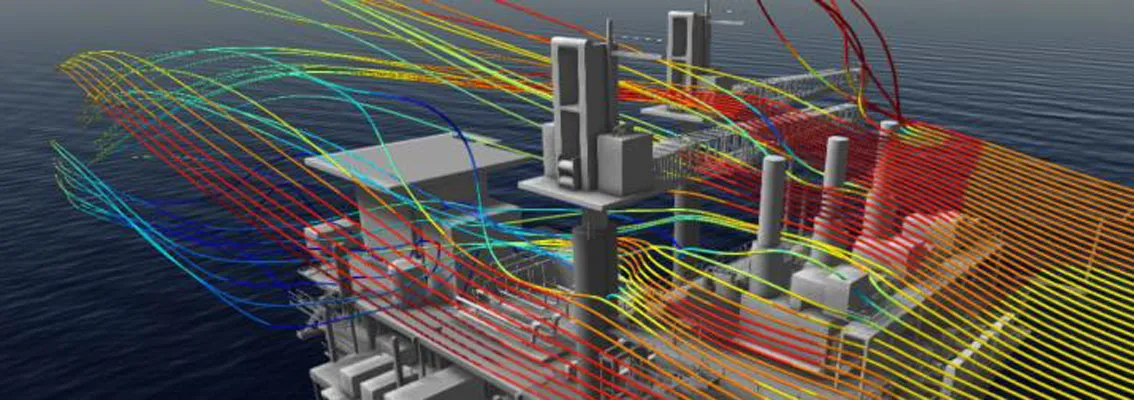Computational fluid dynamics (CFD) is widely used in high-level analyses of offshore helideck turbulence levels to assess possible flight restrictions. However, the current international regulations’ imposed criteria lead to results that might not reflect operational experience, thus they might also conservatively restrict helicopter operations. DNV GL is launching a joint industry project (JIP) to bridge the gap between advised and actual hazardous flight conditions, ensuring cost-effective designs and helicopter operations without compromising safety.
Helicopter services are responsible for transferring the majority of the workforce to and from offshore installations in an open sea environment that is both challenging and hazardous. Unsafe circumstances can be caused by wind-induced turbulence, which has been ranked by pilots as the greatest of fifteen factors contributing to workload and safety hazards.
Helideck turbulence impairment provides valuable information during design and operation phases, and aids both pilots, at predicting high-risk flight conditions, and engineers, at anticipating the amount of time helicopter transportation may be unavailable for use. Proper safety studies with CFD can support a sound and safe decision basis.
“As a market leader in risk assessment, DNV GL has observed that current turbulence analyses might not reflect the operational experience of pilots across the world due to conservative restrictions in international standards,” says Thábata Maciel, consultant, DNV GL – Oil & Gas. “This concern lies not only on the additional costs in design changes; but also in the carelessness that may evolve from the perception that the study does not represent real-life restrictions to flight.
“We are inviting operators, supply companies, contractors and other stakeholders to participate in this JIP and believe this is an opportunity for safer and more cost-effective designs and procedures for challenging weather conditions. The results of the JIP will lead to the development of a recommended practice which will provide easy-to interpret guidelines for pilots and engineers and will guarantee reproducibility of analysis.
”The scope of the proposed JIP is to bridge this gap and provide useful decision support by detecting true unsafe flying conditions for pilots and operators. Realistic regulations and reliable results can be established by combining extensive literature on the subject, practical information from operators, charterers, pilots and civil authorities, as well as DNV GL’s expertise on numerical simulations and risk assessment.
Find out more about the 'Improving risk assessment of helideck turbulence' JIP here
